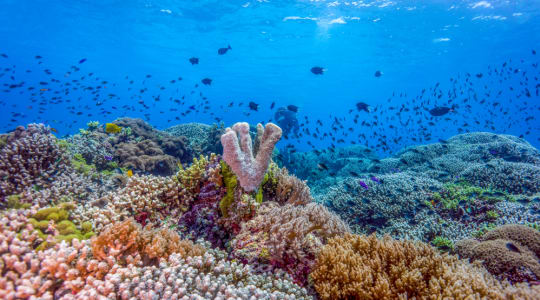
Tubbataha Reef is a marine sanctuary and UNESCO World Heritage Site located in the Sulu Sea, in the western part of the Philippines. The reef covers an area of about 97,030 hectares and is home to more than 600 species of fish, 360 species of coral, 11 species of sharks, 13 species of dolphins and whales, and many other marine creatures.
The Tubbataha Reef is known for its pristine waters, exceptional visibility, and diverse marine life. It is also one of the few remaining coral reefs in the world that are still in excellent condition, making it a popular destination for scuba diving and snorkeling.
The reef is located in the middle of the Sulu Sea, approximately 150 kilometers southeast of Puerto Princesa City in Palawan, and can only be accessed by boat. The best time to visit the reef is from March to June, when the sea is calm and the visibility is at its best.
The Tubbataha Reef is divided into two main areas, the North Atoll and the South Atoll. The North Atoll has a larger area and is known for its wall diving sites, while the South Atoll has more shallow reefs and is better for snorkeling.
In order to preserve the reef's natural beauty, the Tubbataha Reef is heavily protected, and only a limited number of visitors are allowed to visit the reef each year. Tourists are required to pay a fee and must follow strict rules and regulations to ensure that they do not damage the reef.
In addition to its natural beauty, the Tubbataha Reef is also known for its important role in marine conservation. The reef serves as a breeding ground for many marine species, and its protection has helped to ensure the survival of many threatened and endangered species of fish and other marine creatures.